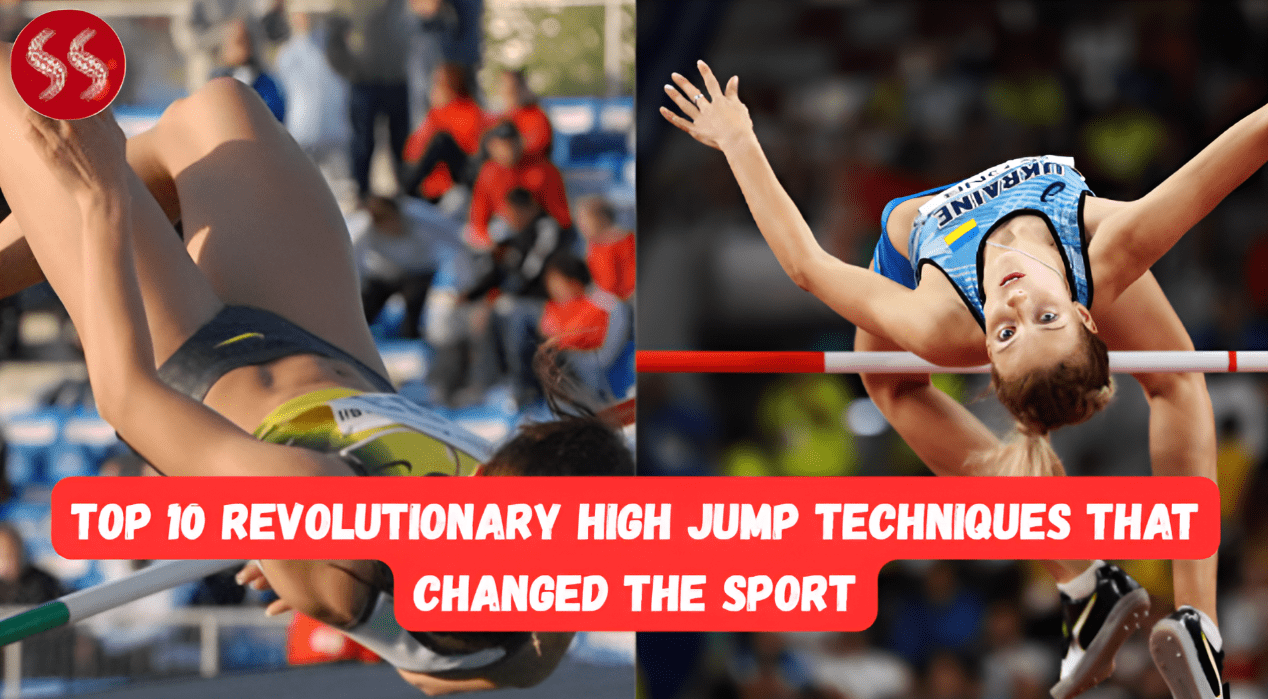The high jump is a discipline where form, physics, and finesse converge to create some of the most breathtaking moments in athletics. While raw power and athleticism play a key role, it’s the technique that truly separates good jumpers from the greats. Over the decades, a variety of methods have emerged—some born out of necessity, others from sheer innovation—each contributing to the evolution of the sport. In this article, we’ll explore the Top 10 Revolutionary High Jump Techniques that redefined how athletes approach the bar.
From early styles like the scissors technique and Eastern cut-off to the world-changing Fosbury Flop, every leap in technique pushed the sport to new heights—literally. The Top 10 Revolutionary High Jump Techniques didn’t just influence how athletes jump; they impacted training regimes, competition rules, and even the design of landing areas. These methods allowed jumpers to defy previous limits and approach the bar with greater efficiency and creativity.
As we dive into the Top 10 Revolutionary High Jump Techniques, we’ll uncover the origin, mechanics, and lasting legacy of each style. Some techniques dominated for decades, while others had a brief yet powerful impact. Together, they tell the story of a sport constantly in motion, forever seeking that perfect takeoff, arc, and landing.
Top 10 Revolutionary High Jump Techniques :
10. Straddle Roll

The Straddle Roll holds a significant place in the Top 10 Revolutionary High Jump Techniques, bridging the gap between older, upright methods and the modern, inverted approaches. Popular from the 1930s to the 1960s, this technique required athletes to jump off their inner leg, approach the bar diagonally, and roll their torso and legs over the bar while facing downward.
The lead leg would clear first, followed by a tightly controlled trailing leg and body. What made the Straddle Roll revolutionary was its emphasis on lower body power, flexibility, and core control. It allowed athletes to keep their center of mass just below the bar, giving them a mechanical edge that helped set multiple world records. Champions like Valeriy Brumel used the Straddle Roll to dominate international competitions during the Soviet era.
This technique also benefited from improved landing areas, allowing jumpers to take greater risks in positioning. While the Fosbury Flop eventually replaced it, the Straddle Roll’s influence on biomechanics and form was critical to high jump evolution. Its dominance for nearly three decades proves why it’s one of the Top 10 Revolutionary High Jump Techniques, representing a major turning point in the sport’s technical progression.
9. Scissors Technique
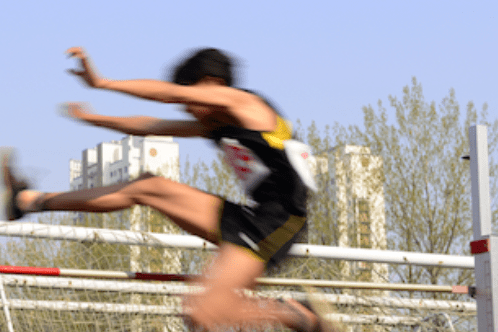
The Scissors Technique earns its place among the Top 10 Revolutionary High Jump Techniques as one of the first structured methods used in competitive high jumping. Simple yet effective, this technique involves a straight-line approach where the jumper lifts one leg up and over the bar, followed by the other in a scissor-like motion, while maintaining an upright torso.
It was widely used in the late 19th and early 20th centuries when landing surfaces were made of sand or sawdust, requiring athletes to land on their feet to avoid injury. The technique prioritized balance, timing, and coordination over brute force or extreme flexibility. While it limited the maximum achievable height compared to later innovations, the Scissors Technique was revolutionary in formalizing high jump movement.
It laid the foundation for every method that followed by establishing rhythm, approach discipline, and leg control as key elements of a successful jump. Even today, this technique is taught at the beginner level to introduce young athletes to the mechanics of high jumping. As one of the Top 10 Revolutionary High Jump Techniques, the scissors jump represents both the sport’s humble beginnings and its commitment to safe, consistent progress in technique development.
8. Western Roll
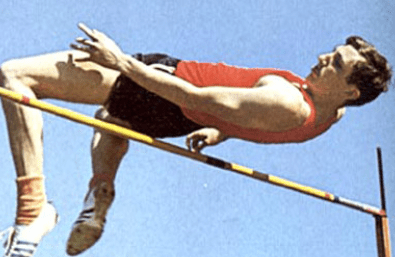
The Western Roll stands out as a critical milestone in the Top 10 Revolutionary High Jump Techniques, marking a significant departure from upright styles like the scissors. Developed in the early 20th century and gaining widespread popularity by the 1930s, the Western Roll introduced a more angled, dynamic approach. In this technique, athletes took off from the inner foot, rotated their body sideways while facing downward, and cleared the bar with the lead leg followed by the rest of the body.
This method allowed the jumper’s center of gravity to remain closer to the bar, increasing overall efficiency. The Western Roll proved its value on the global stage when athletes like George Horine and Cornelius Johnson used it to win Olympic medals and break records. Its design required strong core control, a flexible spine, and an ability to twist midair while maintaining trajectory.
The technique brought a new level of sophistication to the event, highlighting the importance of body positioning and bar clearance mechanics. Though it was eventually surpassed by even more innovative styles, the Western Roll remains one of the Top 10 Revolutionary High Jump Techniques, praised for elevating both the athletic standard and tactical complexity of the sport.
7. Eastern Cut-Off

The Eastern Cut-Off earns its spot in the Top 10 Revolutionary High Jump Techniques as a refined evolution of earlier methods like the scissors and Western Roll. Emerging primarily in the early 1900s, this technique was popular among jumpers seeking more efficient bar clearance without adopting a full roll. The Eastern Cut-Off featured a straight approach with a sharp, forceful takeoff, leading into a quick leg extension and a “cut-off” of the lead leg at the peak of the jump. This allowed the jumper’s hips and upper body to stay lower, giving better bar clearance with less vertical effort.
Unlike the Western Roll or later straddle variations, the Eastern Cut-Off prioritized speed, timing, and upper-body rigidity. While not as visually dramatic, it was extremely effective for athletes with strong sprinting backgrounds. The technique demanded high coordination and a precise sense of timing to ensure maximum lift from a limited takeoff window.
Though it eventually faded in elite competition, it played a vital transitional role in the sport’s evolution. As one of the Top 10 Revolutionary High Jump Techniques, the Eastern Cut-Off bridged the gap between rudimentary upright jumps and more dynamic rotational styles, shaping how athletes approached vertical clearance in a pre-Fosbury era.
6. Sail Technique
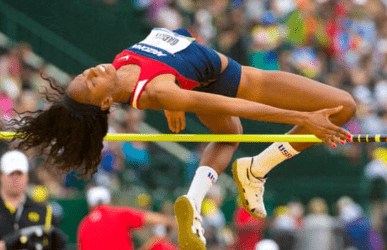
The Sail Technique marks a unique moment in high jump history and firmly belongs in the Top 10 Revolutionary High Jump Techniques due to its innovative approach to aerial form and flight control. Emerging in the mid-20th century, the sail technique focused on maximizing the jumper’s time in the air by “sailing” over the bar with a stretched-out body position. Athletes used a relatively straight run-up and took off facing the bar, lifting the lead leg and swinging the arms upward while fully extending the torso and trailing leg mid-jump.
The defining feature of the Sail Technique was its emphasis on horizontal momentum and body lengthening to optimize bar clearance. This method required a blend of speed, coordination, and precise timing. While it did not dominate the competitive scene for long, it acted as a creative alternative to more rigid styles like the Western Roll. Athletes who adopted the sail jump found improved height potential through better use of body extension and arm drive.
Although it was later eclipsed by the more efficient straddle and Fosbury techniques, the sail jump’s emphasis on flight mechanics played a crucial role in the sport’s progression. That’s why it earns a place in the Top 10 Revolutionary High Jump Techniques.
5. Knees-Up (Running) Jump

The Knees-Up or Running Jump might not be the most technically complex style, but it holds undeniable value in the Top 10 Revolutionary High Jump Techniques for its foundational role in training and early-stage development. This technique involves a straightforward running approach followed by a high knee drive at takeoff, using momentum and arm swing to achieve vertical lift. While not used in elite-level competition, the knees-up jump serves as the building block for all high jumpers, teaching rhythm, balance, coordination, and timing.
What makes this technique revolutionary is its lasting influence in coaching methodologies across generations. It is the first technique taught to beginners worldwide, laying the groundwork for more advanced methods like the Fosbury Flop or the straddle. By emphasizing natural body movement, it helps athletes develop proper posture, explosive takeoff mechanics, and midair awareness. Even seasoned jumpers return to this method in drills to reinforce their fundamentals.
Though it lacks the sophistication of later styles, the Knees-Up Jump revolutionized how athletes prepare for high jumping. It bridged the gap between instinctive jumping and technical mastery. As a result, it rightfully earns a place among the Top 10 Revolutionary High Jump Techniques, not for competition glory, but for educational impact.
4. Double Arm Drive

The Double Arm Drive technique is not a standalone jumping style but a powerful biomechanical enhancement that revolutionized how athletes achieve lift, making it a deserving entry in the Top 10 Revolutionary High Jump Techniques. In this method, the jumper swings both arms forcefully upward during takeoff, synchronizing the arm motion with the leg push to maximize vertical propulsion. This creates greater upward momentum and contributes to a more explosive launch from the ground.
While earlier jumping methods often used a single-arm lift or a relaxed upper body, the introduction of the double arm drive changed the mechanics of the event. It allowed athletes to achieve more height with the same or even reduced leg effort, improving efficiency. This technique became particularly impactful when integrated into styles like the straddle and later the Fosbury Flop, enhancing their effectiveness even further.
Today, nearly every elite high jumper uses some version of the double arm drive, making it one of the most enduring and influential technical innovations in the sport. Its adaptability and contribution to jump height ensure its place among the Top 10 Revolutionary High Jump Techniques, proving that sometimes, a small change in mechanics can lead to major leaps in performance.
3. Modified Straddle (Russian Style)
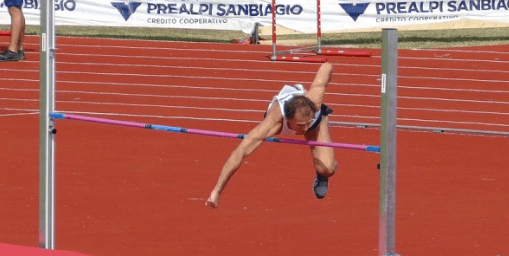
The Modified Straddle, often referred to as the Russian Style, represents one of the most influential pre-Fosbury innovations and rightly belongs among the Top 10 Revolutionary High Jump Techniques. This refined version of the traditional straddle technique featured a faster approach, a powerful knee drive, and precise timing, allowing athletes to clear the bar with impressive consistency and control. The jumper would approach diagonally, take off from the inner leg, and sweep the lead leg across the bar while turning the torso downward. However, the key improvement in this version was the efficiency of body alignment and clearance mechanics.
Soviet athlete Valeriy Brumel perfected this technique during the 1960s, setting world records and winning Olympic gold with it. His success demonstrated the full potential of technical precision and explosive power. The Russian Style straddle reduced wasted movement and optimized bar clearance, especially with improved landing mats that allowed for riskier positions during descent.
Though it was eventually eclipsed by the Fosbury Flop, the Modified Straddle marked the peak of the straddle era. It brought high jumpers closer than ever to their vertical limits and laid critical groundwork for future breakthroughs, making it a core entry in the Top 10 Revolutionary High Jump Techniques.
2. Jumping Off the Non-Dominant Leg

Jumping off the non-dominant leg might sound counterintuitive, but it played a revolutionary role in shaping modern high jump biomechanics. That’s why it earns a firm place among the Top 10 Revolutionary High Jump Techniques. Traditionally, athletes would jump off their stronger leg, assuming it provided more power and control. However, experimentation in the late 20th century revealed that jumping off the non-dominant leg often allowed for better curvature in the approach and more efficient body rotation over the bar—especially with the Fosbury Flop technique.
Athletes began realizing that their stronger leg was better utilized as the “drive leg” to generate upward lift, while the non-dominant leg provided a stable base for takeoff. This small adjustment improved balance, created a smoother takeoff arc, and allowed for more fluid execution in midair. Coaches soon adopted this discovery into training programs, customizing takeoff legs based on biomechanics rather than preference or handedness.
Though not a “technique” in the traditional sense, this strategic shift redefined how high jumpers prepared for competition. It brought a new level of personalization and performance optimization to the sport. For its subtle yet powerful impact, this change rightfully belongs in the Top 10 Revolutionary High Jump Techniques list.
1. Fosbury Flop
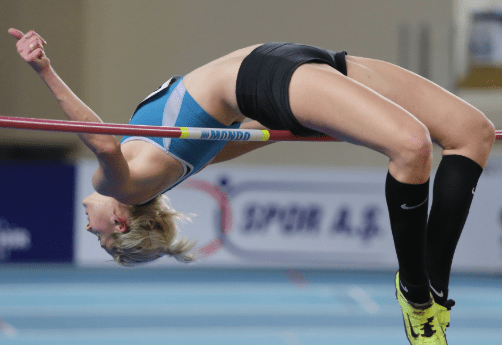
Topping the list of the Top 10 Revolutionary High Jump Techniques is the Fosbury Flop—an innovation that didn’t just improve high jumping but completely redefined it. Introduced to the world by American athlete Dick Fosbury at the 1968 Mexico City Olympics, this backward-arching style stunned both spectators and competitors. Instead of using the traditional straddle or roll techniques, Fosbury ran a curved approach, launched off his inner leg, and twisted mid-air to clear the bar headfirst and back-first, landing on his shoulders.
The result was a gold medal and a new Olympic record—and the birth of a technique that would soon become the global standard. The Fosbury Flop allowed athletes to keep their center of mass below the bar while clearing it, increasing both efficiency and achievable height. It also took advantage of modern foam landing pits, which made the head-first landing safe and sustainable.
Since 1968, nearly every world record and Olympic gold in the high jump has been achieved using the Fosbury Flop. It is the most successful and widely adopted method in the sport’s history. For its revolutionary design and unmatched impact, the Fosbury Flop stands alone at number one in the Top 10 Revolutionary High Jump Techniques.
FAQs
Q1. What are the Top 10 Revolutionary High Jump Techniques?
The Top 10 Revolutionary High Jump Techniques include styles like the Straddle Roll, Scissors, Western Roll, Eastern Cut-Off, Sail Technique, and the iconic Fosbury Flop. These techniques transformed how athletes approach, take off, and clear the bar.
Q2. Why is the Fosbury Flop considered revolutionary?
The Fosbury Flop changed the sport by allowing jumpers to arch backward over the bar, keeping their center of mass lower and improving efficiency. It led to higher jumps and became the standard in modern high jumping.
Q3. Are old high jump techniques still used today?
While most elite athletes use the Fosbury Flop, older techniques like the scissors or sail are still taught at beginner levels to develop coordination and foundational skills.
Read More:

